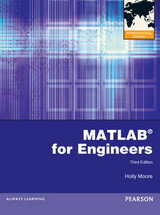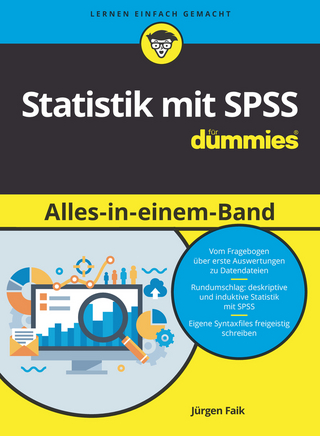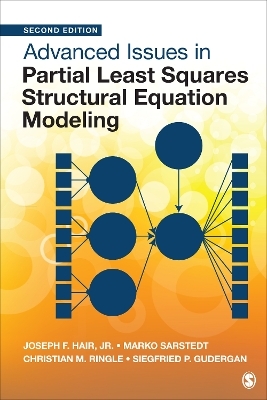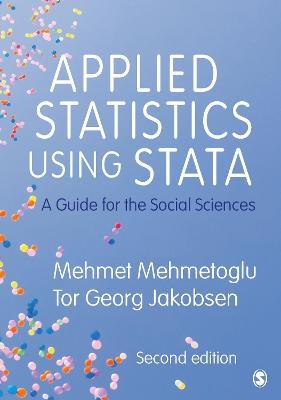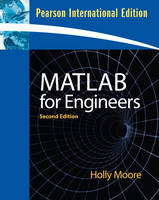
MATLAB for Engineers
Pearson (Verlag)
978-0-13-136217-8 (ISBN)
- Titel erscheint in neuer Auflage
- Artikel merken
With a hands-on approach and focus on problem solving, this introduction to the powerful MATLAB computing language is designed for students with only a basic college algebra background. Numerous examples are drawn from a range of engineering disciplines, demonstrating MATLAB’s applications to a broad variety of problems.
Note: This book is included in Prentice Hall’s ESource series. ESource allows professors to select the content appropriate for their freshman/first-year engineering course. Professors can adopt the published manuals as is or use ESource’s website www.prenhall.com/esource to view and select the chapters they need, in the sequence they want. The option to add their own material or copyrighted material from other publishers also exists.
Previous edition TOC
SECTION 1: AN INTRODUCTION TO BASIC MATLAB SKILLS
1. About Matlab
1.1 What is Matlab?
1.2 Student Edition of Matlab
1.3 How is Matlab used in Industry?
1.3.1 Electrical Engineering
1.3.2 Biomedical Engineering
1.3.3 Fluid Dynamics
1.4 Problem Solving in Engineering and Science
2. Matlab Environment
2.1 Getting Started
2.2 Matlab Windows
2.2.1 Command Window
2.2.2 Command History
2.2.3 Workspace Window
2.2.4 Current Directory Window
2.2.5 Document Window
2.2.6 Graphics Window
2.2.7 Edit Window
2.2.8 Start Button
2.3 Solving Problems with Matlab
2.3.1 Using Variables
2.3.2 Matrices in Matlab
2.3.2.1 Scalar Operations
2.3.2.2 Order of Operation
2.3.2.3 Array Operations
2.3.3 Number Display
2.3.3.1 Scientific Notation
2.3.3.2 Display Format
2.4 Saving Your Work
2.4.1 Saving Variables
2.4.2 Script M-files
3. Built-in Matlab Functions
3.1 Using Built-in Functions
3.2 Using the Help Feature
3.3 Elementary Math Functions
3.3.1 Common Computations
3.3.2 Rounding Functions
3.3.3 Discrete Mathematics
3.4 Trigonometric Functions
3.5 Data Analysis Functions
3.5.1 Maximum and Minimum
3.5.2 Mean and Median
3.5.3 Sums and Products
3.5.4 Sorting Values
3.5.5 Determining Matrix Size
3.5.6 Variance and Standard Deviation
3.6 Random Numbers
3.6.1 Uniform Random Numbers
3.6.2 Gaussian Random Numbers
3.7 Complex Numbers
3.8 Computational Limits
3.9 Special Values and Miscellaneous Functions
4. Manipulating Matlab Matrices
4.1 Manipulating Matrices
4.1.1 Defining Matrices
4.1.2 Using the Colon Operator
4.2 Problems with Two Variables
4.3 Special Matrices
4.3.1 Matrix of Zeros
4.3.2 Matrix of Ones
4.3.3 Diagonal Matrices
4.3.4 Magic Matrices
5. Plotting
5.1 Two Dimensional Plots
5.1.1 Basic Plotting
5.1.2 Line, Color and Mark Style
5.1.3 Axis Scaling and Annotating Plots
5.2 Subplots
5.3 Other Types of Two Dimensional Plots
5.3.1 Polar Plots
5.3.2 Logarithmic plots
5.3.3 Bar Graphs and Pie Charts
5.3.4 Histograms
5.3.5 X-Y Graphs with two Y Axes
5.3.6 Function Plots
5.4 Three Dimensional Plotting
5.4.1 Three Dimensional Line Plot
5.4.2 Surface Plots
5.5 Editing Plots from the Menu Bar
5.6 Creating Plots from the Workspace Window
5.7 Saving Your Plots
SECTION 2: PROGRAMMING IN MATLAB
6. User-Defined Functions
6.1 Creating Function M-files
6.1.1 Syntax
6.1.2 Comments
6.1.3 Functions with Multiple Inputs and Outputs
6.1.4 Functions with No input or no outputs
6.1.5 Determining the number of input and output arguments
6.1.6 Local Variables
6.1.7 Global Variables
6.1.8 Accessing M-file Code
6.2 Creating Your Own Tool Box of Functions
6.3 Anonymous Functions
6.4 Function Functions
7. User Controlled Input and Output
7.1 User Defined Input
7.2 Output Options
7.2.1 Display Function
7.2.2 Formatted Output (fprintf)
7.3 Graphical Input
7.4 Using Cell Mode in Matlab M-files
7.5 Reading and Writing Data From Files
8. Logical Functions and Control Structures
8.1 Relational and Logical Operators
8.2 Flow Charts and Pseudo-Code
8.3 Logical Functions
8.3.1 Find
8.3.2 Flow Charting and Pseudo Code for Find Commands
8.4 Selection Structures
8.4.1 The Simple If
8.4.2 If/Else
8.4.3 Elseif
8.4.4 Switch and Case
8.4.5 Menu
8.5 Repetition Structures - Loops
8.5.1 For Loops
8.5.2 While Loops
8.5.3 Break and Continue
8.5.4 Improving the Efficiency of Loops
SECTION 3: ADVANCED MATLAB CONCEPTS
9. Matrix Algebra
9.1 Matrix Operations and Functions
9.1.1 Transpose
9.1.2 Dot Product
9.1.3 Matrix Multiplication
9.1.4 Matrix Inverse
9.1.5 Determinants
9.1.6 Cross Products
9.2 Solutions to Systems of Linear Equations
9.2.1 Solution Using the Matrix Inverse
9.2.2 Solution Using Matrix Left Division
9.3 Special Matrices
9.3.1 Ones and Zeros
9.3.2 Identity Matrix
9.3.3.Other Matrices
10. Other Kinds of Arrays
10.1 Data Types
10.1.1 Numeric Data Types
10.1.2 Character and String Data
10.1.3 Symbolic Data
10.1.4 Logical Data
10.1.5 Sparse Matrices
10.2 Multidimensional Arrays
10.3 Character Arrays
10.4 Cell Arrays
10.5 Structure Arrays
11. Symbolic Mathematics
11.1 Symbolic Algebra
11.1.1 Creating Symbolic Variables
11.1.2 Manipulating Symbolic Expressions and Symbolic Equations
11.2 Solving Expressions and Equations
11.2.1 The Solve Function
11.2.2 Solving Systems of Equations
11.2.3 Substitution
11.3 Symbolic Plotting
11.3.1 The ezplot Function
11.3.2 Additional Symbolic Plots
11.4 Calculus
11.4.1 Differentiation
11.4.2 Integration
11.5 Differential Equations
12. Numerical Techniques
12.1 Interpolation
12.1.1 Linear Interpolation
12.1.2 Cubic Spline Interpolation
12.1.3 Multidimensional Interpolation
12.2 Curve Fitting
12.2.1 Linear Regression
12.2.2 Polynomial Regression
12.2.3 The polyval function
12.3 Using the Interactive Fitting Tools
12.3.1 Basic Fitting Tools
12.3.2 Curve Fitting Toolbox
12.4 Differences and Numerical Differentiation
12.5 Numerical Integration
12.6 Solving Differential Equations Numerically
13. Advanced Graphics
13.1 Images
13.2 Handle Graphics
13.3 Animation
13.4 Other Visualization Techniques
13.5 Introduction to Volume Visualization
Appendix A: Command Summary
Appendix B: Answers to Practice Exercises
| Erscheint lt. Verlag | 13.1.2009 |
|---|---|
| Sprache | englisch |
| Maße | 204 x 254 mm |
| Gewicht | 964 g |
| Themenwelt | Mathematik / Informatik ► Mathematik ► Computerprogramme / Computeralgebra |
| Technik | |
| ISBN-10 | 0-13-136217-8 / 0131362178 |
| ISBN-13 | 978-0-13-136217-8 / 9780131362178 |
| Zustand | Neuware |
| Informationen gemäß Produktsicherheitsverordnung (GPSR) | |
| Haben Sie eine Frage zum Produkt? |
aus dem Bereich
